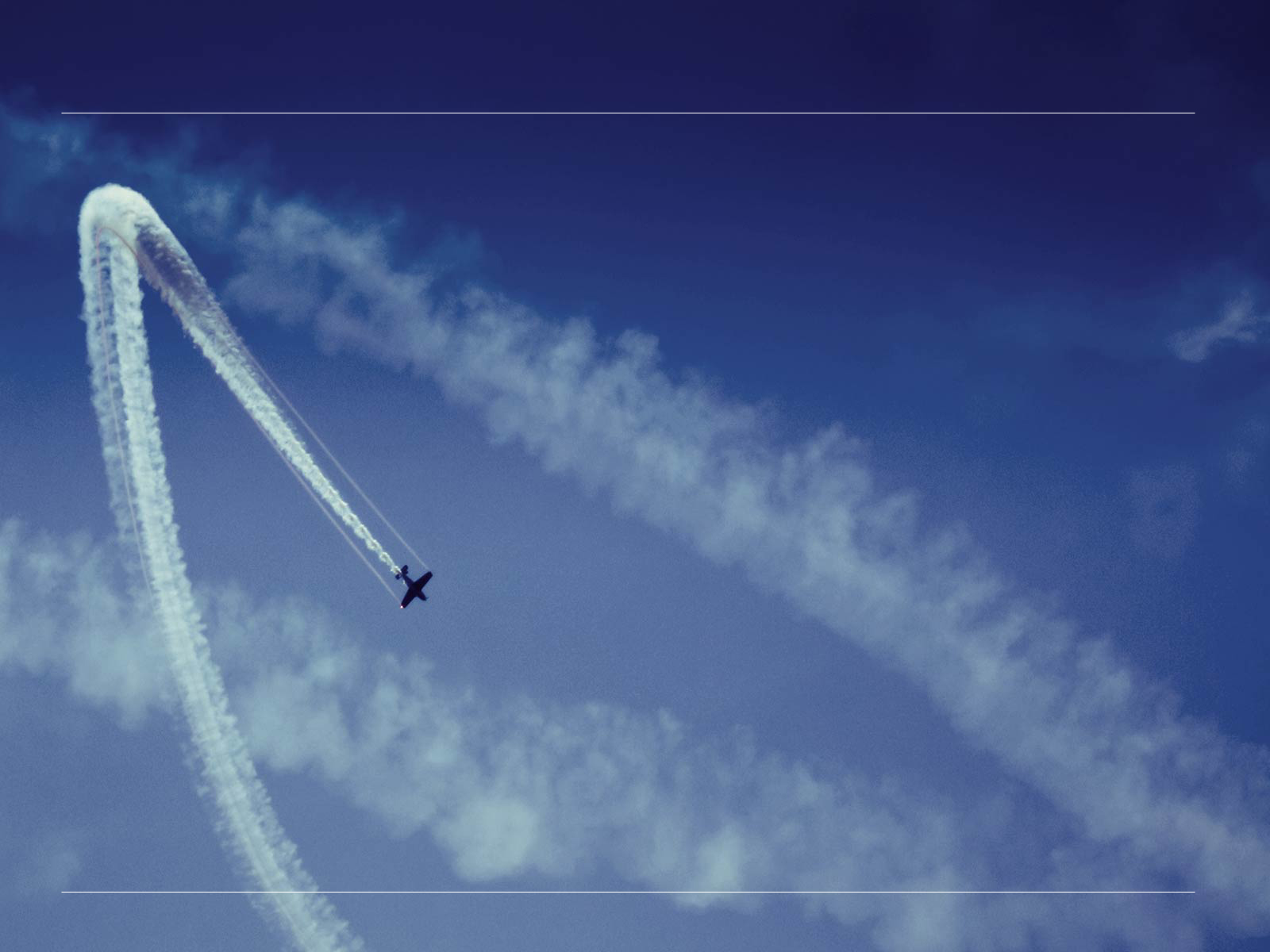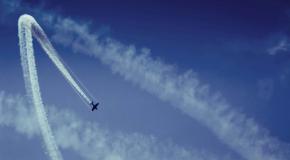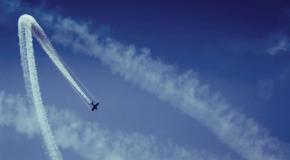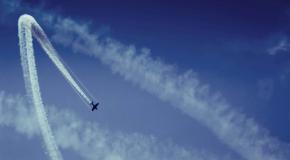As airlines emerge from an austerity-driven focus on costs and begin to re-focus on improving the customer experience, the return on investment (ROI) for necessary upgrades remains top of mind. Yet ROI on “experiential improvements”—unlike returns on fuel efficiency or other more measurable inputs—can be difficult to quantify.
Nonetheless, it behooves airlines hoping to rebuild customer loyalty to carefully consider these “softer investments”. Without them, it won’t be possible to meet customer demand for a better, more personalised experience, including faster boarding, better food or broader access to entertainment. More nuanced cost-benefit calculations may be in order.
The Apple experience
Corporate training strategist Jim Kirkpatrick cites “return on expectations” (ROE) as a key complement to ROI—Apple’s successful strategies in the retail space support this perspective.
Tim Kobe, founder and chief executive officer of the design firm Eight Inc., was among the handful of people who worked with the late Steve Jobs, Apple’s chief executive officer at the time, to bring the Apple stores to fruition. “It was impossible, selling online and through third-party resellers, to justify the brand as valuable enough to justify the price—which was higher than the value competitors,” he says. “The most successful brands,” Mr Kobe emphasises, “are those that offer a distinct brand experience, deliver on it reliably and build an irrationally loyal customer base.”
According to the news website Apple Insider, Apple spent approximately US$745m on design, construction and leases for its first wave of retail stores. Within three years, Apple’s stores surpassed US$1bn in annual sales—faster than any previous franchise.
“Store design and development costs are a rounding error,” Mr Kobe insists. “Brand-building, performance and perception of value are where the revenue is generated,” he says. At almost any cost, it’s expensive if “poorly done”, while cost is “immaterial if well done”. The Apple story demonstrates the income that can be generated by investing heavily in the softer aspects of brand-building and the customer experience. It also proves that going against the prevailing trend—Gateway was shutting down its single-brand retail operation while Apple was expanding into that exact space—can also prove a smart play.
Technology costs have upended old ROI calculations
Another softer-side investment that was part of Apple’s design process involved sending retail staff to Ritz-Carlton hotel management classes taught by Diana Oreck, vice president of the company’s executive training facility, The Ritz-Carlton Leadership Center. What Apple clearly sought to adopt from the hospitality industry was a greater capacity to personalise the customer experience.
In an effort to deepen that personalisation further, hotel chains are standardising their practices and data-gathering across all their global holdings. This is facilitating more consistent and more accurate distribution of the information that lets hoteliers know, before a guest even walks through the door, the details that will soothe or annoy their visitor. The IT backbone supporting these changes is not fundamentally new, but it is vastly more powerful and much cheaper than ever before.
Valyn Perini, former senior vice president of Kalibri Labs, which conducts revenue-performance analysis for the hospitality industry, previously served as CEO of the Open Travel Alliance, which works towards information distribution standards. Earlier in her career, she was the director of database resources at Swissotel Hotels & Resorts.
“When I was at Swissotel one of my last duties there—in the late 1990s, the early 2000s—was implementing a worldwide guest loyalty database. We wanted to know who our best guests were … who stayed at which property, regardless of what country or region they were in, how much they’d spent. And that was going to inform how we talked to them and who we shared their data with. We wanted to manage our guests’ expectations, giving them a return on their expectations of the service and the product they would get when they came back to Swissotel. Our expectation was that we would get a ROI because they would return more often and spend more money.”
That Swissotel took on this task as an in-house project says a great deal about the company’s commitment to invest whatever was necessary to better understand and please its guests. Going back almost 20 years, the cost of collecting, aggregating, analysing, storing and transmitting the amounts of data necessary to accomplish this task were substantial. “As one downturn followed another,” Ms Perini says, “hotels and airlines started re-thinking that approach.”
As she notes, airlines also took steps in this direction around that same time—and then pulled back, unable to justify the costs. So why should things be different now? Advances in digital technologies have hugely increased the amount of data that can be stored and the speed at which it can be analysed and transmitted while lowering the cost.
An example that would apply to the Swissotel experience puts this trend in perspective:
In 2000, a 47 gb hard disk cost US$695
In 2014, a 3 tb hard disk (physically smaller, but holding 64 times the data) cost US$110
Had the cost per byte for the year 2000 applied, the 3 tb disk would be priced at an exponentially higher US$44,480. Clearly, the cost of change has plummeted. The cost of inaction, however, is getting higher.
Wi-Fi in the sky … is the time now?
On the other hand, without an accurate assessment of the environment a company is operating in, the cost of forging ahead at the wrong time can be high. Such was the case for Lufthansa in 2004 when it launched Boeing’s in-flight Internet service, dubbed “Connexion”. A billion dollars later, at the end of 2006, Boeing discontinued the commercial aviation side of the programme. For a decade, the problems have remained more or less the same: speed (too slow), price (too high), customers (too few).
Michael Small, Gogo Inc.’s chief executive officer, commenting on Boeing’s early foray, says that the airline “tried a little too early so they chose solutions that were ‘not quite ready-for-prime-time’. But the solutions that get deployed now [referring to his company’s products, which enable in-flight access to the Internet] are going to be pretty good.”
To ensure that will be the case, in December 2013, Inmarsat, in partnership with Honeywell and Gogo, launched one of the three satellites that will offer the Global Xpress (GX) Aviation network, touted as “global high-speed broadband for the skies”. And, in April 2014, AT&T announced it would begin offering in-flight Wi-Fi within the continental US by late 2015, using the 4G LTE technology that its cellular phone network runs on.
Calculating ROI on in-flight Wi-Fi requires answers to a number of key questions, an approach useful to airlines analysing other, similarly hard-to-quantify investments: Is the timing right? Is demand sufficient? Is there a map—ideally offering more than one route—to how the investment can pay off? And, taking from Mr Kobe’s playbook, what’s the cost of doing nothing?
Customer and operational demand
In calculating the anticipated demand for Wi-Fi, Gogo considers the rate at which consumers adopted previous breakthrough technologies, for example, cable television, mobile phones and home broadband. Gogo is counting on two potential revenue streams for in-flight Wi-Fi: customers and airline operations. Until now, the only revenue has come from “the business traveller at a premium price”, Mr Small says, “… five years from now”, prices down and speed up, “it will be everybody”. He puts the potential revenue value of aircraft connectivity at “close to a million dollars per aircraft per year”.
Passenger side, Wi-Fi revenue will come not just from access fees (likely to be cut significantly or phased out altogether as on-board Wi-Fi becomes ubiquitous) but also from the range of additional opportunities this new channel opens up. These include advertising, sales of premium entertainment, sales partnerships with other travel providers and retailers—as well as upselling future flights.
Operations side, aircraft that are online will reap similar sorts of efficiencies that 24/7 on-the-ground connectivity has brought to offices, homes and people with mobile phones as planes become able to communicate easily with various of their divisions on the ground, as well as with connecting components of the full trip. Mr Small sees the networked plane becoming an operational necessity for “safety … reporting … maintenance … marketing. Soon you will not be able to be in the airline business without connecting your aircraft,” he maintains. “If your office were unconnected, your office would be useless. Aircraft will be the same way.”
The value of return on expectations
The J.D. Power 2014 North America Airline Satisfaction Study, released in mid-May 2014, shows a positive trend in how customers feel about airlines. From a 2009 low of 658 (on a 1,000-point scale), customer satisfaction with the airlines reached a record high of 712—an improvement, but still trailing hotels (777), rental cars (775) and even mortgage lenders (771).
In the accompanying press release, Rick Garlick, J.D. Power’s global travel and hospitality practice lead, cited technology upgrades—directly and indirectly—as one of the factors boosting customer satisfaction despite high air-travel costs, specifically mentioning onboard Wi-Fi and improvements in check-in procedures.
Businesses run on numbers and the resulting calculations. But businesses that strive to be consumer-oriented, rather than commodities, ignore softer factors at their peril. As Mr Kobe notes, in making investment decisions, it is important to always assess “the cost of doing nothing”. By investing in Wi-Fi, for example, when the time is right and the lessons of earlier attempts have been absorbed, airlines are improving both their return on investment and their return on expectations—to the benefit of their customers and their business.







